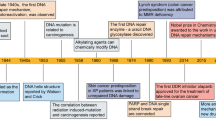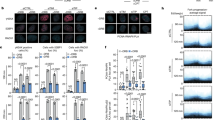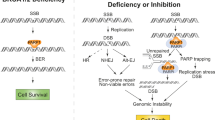Abstract
Tumors often have DNA repair defects, suggesting additional inhibition of other DNA repair pathways in tumors may lead to synthetic lethality. Accumulating data demonstrate that DNA repair‐defective tumors, in particular homologous recombination (HR), are highly sensitive to DNA‐damaging agents. Thus, HR‐defective tumors exhibit potential vulnerability to the synthetic lethality approach, which may lead to new therapeutic strategies. It is well known that poly (adenosine diphosphate (ADP)‐ribose) polymerase (PARP) inhibitors show the synthetically lethal effect in tumors defective in BRCA1 or BRCA2 genes encoded proteins that are required for efficient HR. In this review, we summarize the strategies of targeting DNA repair pathways and other DNA metabolic functions to cause synthetic lethality in HR‐defective tumor cells.
Similar content being viewed by others
Article PDF
Author information
Authors and Affiliations
Corresponding authors
Rights and permissions
About this article
Cite this article
Guo, G., Zhang, F., Gao, R. et al. DNA repair and synthetic lethality. Int J Oral Sci 3, 176–179 (2011). https://doi.org/10.4248/IJOS11064
Received:
Accepted:
Published:
Issue date:
DOI: https://doi.org/10.4248/IJOS11064
Keywords
This article is cited by
-
The poly (ADP-ribose) polymerase inhibitor rucaparib suppresses proliferation and serves as an effective radiosensitizer in cervical cancer
Investigational New Drugs (2019)
-
Enhancer of rudimentary homolog regulates DNA damage response in hepatocellular carcinoma
Scientific Reports (2015)



